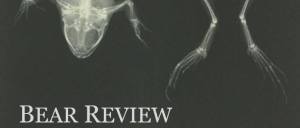Jose Angel Araguz's Blog, page 46
October 2, 2015
* final reasons (not) to dance excerpts & art
For various reasons, I fell behind in sharing more from my latest chapbook of prose poems and flash fictions, Reasons (not) to Dance. As promised, here is the final installment of excerpts and artwork from the project.
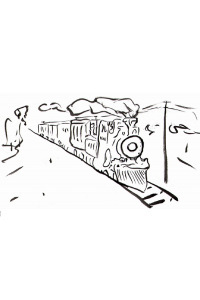
* train of thought *
This almost-cover image was inspired by the piece below, “Relinquished.” One of the memories that always comes up when revisiting this particular piece is one audience member’s reaction back in 2013. I was doing a reading for the Eugene Public Library’s Windfall Reading Series (run by the Lane Literary Guild) and performing excerpts from an early draft of Reasons. As the narrative developed, there was a gasp that reached me as the piece came to its conclusion:
Relinquished
after Lafcadio Hearn
A Buddhist priest – upon receiving a note of love from a woman who had seen him only in passing and could not think of anything else and now hoped for a response from his heart –wrote a letter himself saying that he relinquished his body for he was growing weak and did not want to sin and sent it to his superior before heading out in time to kneel between the rails as an oncoming train made its scheduled trail of smoke and sound in the night – leaving what was left of the man’s heart to be turned over and over in the sleepless thoughts of a woman.
***
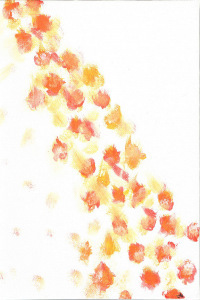
* what blossoms here *
This last image was inspired by the piece that closes Reasons, “Rewarded.” A side note: the story of the man and the tree retold in this piece is from a Zen Buddhist tale. Between the piece above and this one, one can read one of the underlying themes of the project, the worlds one experiences between restlessness and rest:
Rewarded
Showering under a low faucet, I see the sun begin to show at the window. The room fills with orange light, and I am like the man rewarded for his silence as he slept under an orange tree that dropped its blossoms over him in such a way he heard a voice thank him for his words on emptiness. When he spoke up, and said he had said nothing, the tree agreed, he had said nothing, and the tree had heard nothing, and the rush of blossoms poured on.
***
Reasons (not) to Dance is available from FutureCycle Press is available in paperback and Kindle here.
Thank you to all who have bought copies and have shared your thoughts on the project. Special thanks to Diane Kistner and everyone at FutureCycle Press for all the support with this project.
Thank you also to Blue Earth Review for publishing both “Relinquished” and “Look” (shared here) and placing them 2nd in Blue Earth Review’s 2014 Flash Fiction contest.
Lastly, a very special thanks to Andrea Schreiber (“my co-conspirator” to whom the chapbook is dedicated) for all the great artwork and support. It is her art displayed not only on the cover but also on the Reasons-related art/excerpts posts today and from this summer.
See you next Friday!
Jose


September 25, 2015
* dreaming with miroslav holub
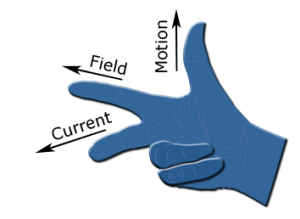
* rules were meant to break your head *
The above image is in reference to Fleming’s right-hand rule, a term used in talking about electromagnetism.
The term appears in this week’s poem, “Dreams” by Miroslav Holub. When writing a dream poem and/or about dreams, I try to always be conscious of the why behind each dream detail. Each detail should feel necessary rather than just shocking or “dream”- like.
The details that surprise me most in Holub’s poem are those that are closest to everyday reality. The short lyric travels from the outlandish to the concrete, and ends on “Just grass” as if defying the expectations of a poem about dreams. Even the reference to the right-hand rule, which was outside of my immediate understanding, is handled as an everyday detail. Holub was a scientist; if dreams are made up in part of the details of everyday life, Holub’s lyric stays true to its revelatory impulse all the way through while remaining consistent to the poet’s life.
***
Dreams – Miroslav Holub
They sap man’s substance
as moon the dew.
A rope grows erect
from the crown of the head.
A black swan hatches
from a pebble.
And a flock of angels in the sky
is taking an evening class
on the skid pan.
I dream, so I dream.
I dream
that three times three is nine,
that the right-hand
rule applies;
and when the circus leaves
the trampled ground will
once more overgrow with grass.
Yes, grass.
Unequivocal grass.
Just grass.
***
Happy grassing!
José


September 22, 2015
* new work up at Bear Review
Just a quick post to announce the release of Bear Review 2.1 which includes two of my poems.
Read “Theory of the Slammed Door” here
and “Theory of Grapes in a Dream” here.
These two poems continue formally in the vein of my “hands” series but move into their conceptual world. Special thanks to Brian Clifton and Marcus Myers for including me and for a dynamic edit in one of the poems!
This issue also includes fine work by J. P. Dancing Bear, Meg Johnson, Nomi Stone, and John Gallaher, as well as a collaboration between Simone Muench and Dean Rader. Read it here.
See you Friday!
José


September 18, 2015
* dedicated with william carlos williams
While “The Red Wheelbarrow” remains one of his more popular poems – and one that confounds students to this day, usually leading to the question Why is that a poem? (to which I usually respond with Why not?) – read enough William Carlos Williams and you’ll see how multifaceted his body of work is. In this week’s poem, “Dedication for a Plot of Ground,” Williams is able to whirlwind through the details of a human life and have them stand with as much vividness as the more nuanced image of
a red wheel
barrow
glazed with rain
water
Two weeks ago I shared a poem by Blaise Cendrars in which I discussed the use of lists in poetry and life. Williams’ use of a list in this week’s poem opens up and gives a second life to a person through his own singular way with specificity.
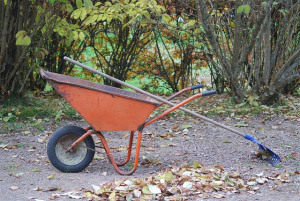
* este wheelbarrow *
Dedication for a Plot of Ground – William Carlos Williams
This plot of ground
facing the waters of this inlet
is dedicated to the living presence of
Emily Dickinson Wellcome
who was born in England; married;
lost her husband and with
her five year old son
sailed for New York in a two-master;
was driven to the Azores;
ran adrift on Fire Island shoal,
met her second husband
in a Brooklyn boarding house,
went with him to Puerto Rico
bore three more children, lost
her second husband, lived hard
for eight years in St. Thomas,
Puerto Rico, San Domingo, followed
the oldest son to New York,
lost her daughter, lost her “baby,”
seized the two boys of
the oldest son by the second marriage
mothered them—they being
motherless—fought for them
against the other grandmother
and the aunts, brought them here
summer after summer, defended
herself here against thieves,
storms, sun, fire,
against flies, against girls
that came smelling about, against
drought, against weeds, storm-tides,
neighbors, weasels that stole her chickens,
against the weakness of her own hands,
against the growing strength of
the boys, against wind, against
the stones, against trespassers,
against rents, against her own mind.
She grubbed this earth with her own hands,
domineered over this grass plot,
blackguarded her oldest son
into buying it, lived here fifteen years,
attained a final loneliness and—
If you can bring nothing to this place
but your carcass, keep out.
***
Happy bringing!
Jose
p.s. Read an article on the recent discovery of the man behind “The Red Wheelbarrow” here.


September 11, 2015
* moebius stripping with michael ondaatje
This is the real secret of life — to be completely engaged with what you are doing in the here and now. And instead of calling it work, realize it is play.
– Alan Watts
I like this quote because of the shift in gears it implies about life and how we approach it. I feel it easily mirrors something done in writing, how one must fight against being caught up in making a point and rather be open to what is at play. In a poem, it is being aware of the possibilities in an image or a turn of phrase, and digging further.
This week’s poem – “The Time Around Scars by Michael Ondaatje” – digs into the image of a scar and ties it to ideas of memory and time. As the poem develops, I feel myself as a reader traveling as if on a moebius strip. Ondaatje, by staying close to an image and emotion, is able to create a reading experience where time is traversed as it only can be in a poem.
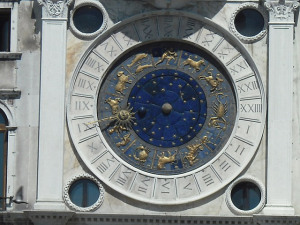
* star time *
The Time Around Scars – Michael Ondaatje
A girl whom I’ve not spoken to
or shared coffee with for several years
writes of an old scar.
On her wrist it sleeps, smooth and white,
the size of a leech.
I gave it to her
brandishing a new Italian penknife.
Look, I said turning,
and blood spat onto her shirt.
My wife has scars like spread raindrops
on knees and ankles,
she talks of broken greenhouse panes
and yet, apart from imagining red feet,
(a nymph out of Chagall)
I bring little to that scene.
We remember the time around scars,
they freeze irrelevant emotions
and divide us from present friends.
I remember this girl’s face,
the widening rise of surprise.
And would she
moving with lover or husband
conceal or flaunt it,
or keep it at her wrist
a mysterious watch.
And this scar I then remember
is a medallion of no emotion.
I would meet you now
and I would wish this scar
to have been given with
all the love
that never occurred between us.
***
Happy occurring!
Jose


September 4, 2015
* listing with blaise cendrars
This week’s poem – “Chinks” by Blaise Cendrars – reminded me of an early lesson about list poems, namely how most poems can easily slip into lists. Whether it be a series of phrases, images, or movements, lists can sneak their way into poems, usually in threes (note how even in this sentence about lists there is a list of three within it!).
Mind you, there’s nothing inherently bad about this: usually it’ll happen naturally and have its own rhythm. Finding ways to subvert this human tendency towards *ahem* “listing” in a poem is always a challenge.
In the poem below, I was moved by the way Cendrars is able to create a pocket of human action between lists. The tension created between nature images and the speaker’s silence in the poem’s narrative adds energy to both.
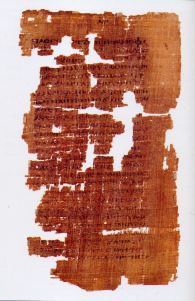
* pieces, in *
Chinks – Blaise Cendrars
Sea vistas
Waterfalls
Trees long-haired with moss
Heavy rubbery glossy leaves
Glazed sun
High burnished heat
Glistening
I’ve stopped listening to the urgent voices of my friends discussing
The news that I brought from Paris
On both sides of the train close by or along the banks of
The distant valley
The forest is there watching me unsettling me enticing me like
a mummy’s mask
I watch back
Never the flicker of an eye.
translated by Dick Jones in qarrtsiluni
***
Happy watching!
Jose


August 28, 2015
* hoping with kay ryan
Crown – Kay Ryan
Too much rain
loosens trees.
In the hills giant oaks
fall upon their knees.
You can touch parts
you have no right to—
places only birds
should fly to.
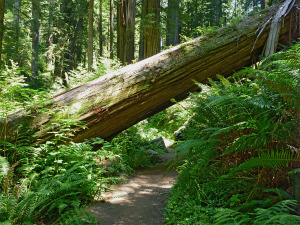
* flight *
As August comes to an end, I begin to reflect on the end of summer – or, rather, the ending of summer. Perhaps it takes being born in the summer to be sensitive to the days beginning to grow shorter, even by minutes. Or maybe that’s just a kind of idealistic hope of my own. My world’s been pretty rich this summer, good and bad. Through it all, I am happy to report hope keeps winning out, idealistic or otherwise.
Kay Ryan’s work has always struck me as full of a similar kind of hope. A kind of stubborn and willful hope played out in phrasing and what she terms “recombinant rhyme.” The poem above models this willfulness with grace; the poem below has a tone steeped in struggle. Enjoy!
A Certain Kind of Eden – Kay Ryan
It seems like you could, but
you can’t go back and pull
the roots and runners and replant.
It’s all too deep for that.
You’ve overprized intention,
have mistaken any bent you’re given
for control. You thought you chose
the bean and chose the soil.
You even thought you abandoned
one or two gardens. But those things
keep growing where we put them—
if we put them at all.
A certain kind of Eden holds us thrall.
Even the one vine that tendrils out alone
in time turns on its own impulse,
twisting back down its upward course
a strong and then a stronger rope,
the greenest saddest strongest
kind of hope.
***
Happy kinding!
José


August 21, 2015
* a colorful lyrical alignment
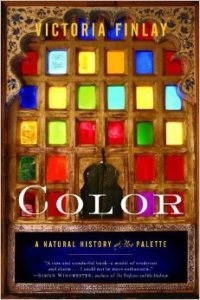
This week’s post features a lyrical alignment of an excerpt from Victoria Finlay’s book Color: A Natural History of the Palette. This is the kind of nonfiction book that tries to break down information through story and personal recollections. Finlay writes of her travels to the places where particular colors are made and goes into the details of their physical and historical make-up.
I read this book back in 2012 and still find myself citing several of its jewels of knowledge with people. One particular moment in the book lends itself to being read on its own like a poem. In the excerpt (lyrically aligned below), Finlay recounts one scientist’s metaphorical explanation of the color of the sky. Enjoy!
The Color of the Sky
a lyrical alignment
“…to explain the color of the sky, [John Tyndall, nineteenth century British scientist] would use an image of the sea.” (from Color – Victoria Finlay)
Think of the ocean, he would say,
and think of the waves
crashing against the land.
If they came across
a huge cliff
then all the waves would stop;
if they met a rock
then only the smaller waves
would be affected;
while a pebble
would change the course
of only the tiniest waves
washing against the beach.
This is what happens
with light from the sun.
Going through the atmosphere
the biggest wave lengths –
the red ones –
are usually unaffected,
and it is only the smallest ones –
the blue and violet ones –
which are scattered by the tiny
pebble-like molecules
in the sky,
giving the human eye
the sensation of blue.
Tyndall thought
it was particles of dust
which did it;
Einstein later proved
that even molecules
of oxygen and hydrogen
are big enough to scatter
the blue rays
and leave the rest alone.
***
Happy scattering!
José


August 14, 2015
* Francisco X. Alarcón: poem & review
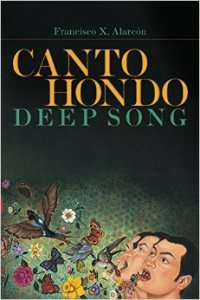
* canto hondo *
Happy to share my latest review for the Volta Blog: a meditation on Francisco X. Alarcón’s latest collection, Canto Hondo. In my review, I discuss Alarcón’s engagement with Federico García Lorca’s ideas on cante jondo (deep song). Alarcón delves into García Lorca’s homage to his Andalusian influences to create his own deep song tempered by his own distinct poetic line, a line I describe as being “as alive and intimate as a nerve or a gasp.”
The review may be read here.
To get a sense of what I mean by the above, I’ve chosen this week’s poem from Alarcón’s From the Other Side of Night/Del otro lado de la noche (University of Arizona Press). Following the poet’s line breaks, I like how the reader is invited into the thought and experience of each stanza. I’m also moved by the choice of moving from a four-line stanza to a three-line stanza, right at the line “…you’re home’s/nowhere -.” This change in form mirrors a change in the drama and tone of the poem; the stanzas that follow put forth their own hope and response to the dilemma of “those who have lost everything.”
Enjoy!
To Those Who Have Lost Everything – Francisco X. Alarcón
crossed
in despair
many deserts
full of hope
carrying
their empty
fists of sorrow
everywhere
mouthing
a bitter night
of shovels
and nails
“you’re nothing
you’re shit
your home’s
nowhere”—
mountains
will speak
for you
rain
will flesh
your bones
green again
among ashes
after a long fire
started in
a fantasy island
some time ago
turning
Natives
into aliens
***
Happy amonging!
José


August 12, 2015
* new work up at the Olduvain Review!
Just a quick post to announce that my poems “Another Sound” and “Of Longing” have been published in The Olduvain Review. Check them out here.
“Of Longing” comes from a conversation I had with C.K. Williams about neither of us playing guitar enough. Perhaps that’ll be the plan for this afternoon :)
See you Friday!
José



